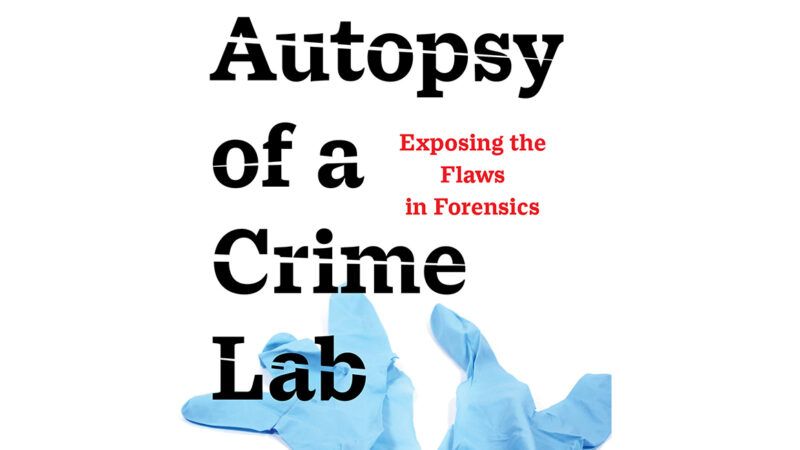Autopsy of a Crime Lab
The book argues that judges should take their responsibility as gatekeepers of scientific and technical evidence more seriously.

"Real CSI is not like what you see on TV," writes Duke law professor Brandon Garrett in Autopsy of a Crime Lab. That's an understatement.
Some forensic specialties—including bite mark, blood spatter, hair, fiber, and footprint analysis—are deeply dubious. Even such venerable techniques as latent fingerprint and ballistic comparisons are not as well-grounded as commonly thought. When you add incompetence, corruption, cognitive biases, and pseudoscientific certainty to the mix, innocent people can end up spending years or decades in prison while the actual perpetrators remain free to continue their criminal careers.
Garrett began studying the science behind commonly used forensic tools after he discovered that they often figured prominently in the wrongful convictions of people who were ultimately exonerated by DNA evidence. Based on testimony from analysts who exuded unjustified confidence in techniques that had never been properly validated, jurors erroneously convicted defendants of robbery, rape, and murder.
Judges likewise credulously accepted the witnesses' assurances that they knew what they were talking about. Even after a bombshell 2009 report from the National Academy of Sciences concluded that much of the forensic evidence used in criminal trials lacked "meaningful scientific validation," judges generally carried on as before, reflexively admitting questionable testimony on the premise that courts would not have done so in the past without good reason. Autopsy of a Crime Lab argues that judges should take their responsibility as gatekeepers of scientific and technical evidence more seriously.
Garrett also recommends stricter regulation of crime labs, better supervision of evidence collection, systematic disclosure of error rates, regular assessment of analysts' proficiency, and making it standard practice to withhold case information that may bias those analysts' conclusions. "Slowly but surely," he hopes, "a new culture of science and statistics is replacing the myth of infallible forensics."


Show Comments (11)